Themed collection Celebrating nanoscience in India

Recent advances in carbon-based materials for high-performance perovskite solar cells: gaps, challenges and fulfillment
Recent advances on the carbon-based materials for efficient and stable perovskite solar cells (PSCs) is deeply analysed. Present review discussed about gaps, challenges, and potential fulfilment towards the possible commercialization of carbon-PSCs.

Nanoscale Adv., 2023,5, 1492-1526
https://doi.org/10.1039/D3NA00005B
Recent trends in carbon nanotube (CNT)-based biosensors for the fast and sensitive detection of human viruses: a critical review
Sensitive and selective detection of SARS-CoV-2 using carbon nanotube (CNTs)-based biosensors for fast, robust and cheap diagnosis of infection to support pandemic management.

Nanoscale Adv., 2023,5, 992-1010
https://doi.org/10.1039/D2NA00236A
Zirconia-based nanomaterials: recent developments in synthesis and applications
In the last decade, the whole scientific community has witnessed great advances and progress in the various fields of nanoscience.
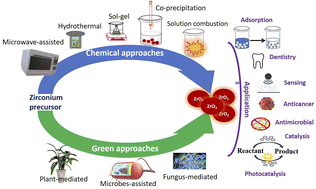
Nanoscale Adv., 2022,4, 4210-4236
https://doi.org/10.1039/D2NA00367H
Recent advances in nanoparticle-based drug delivery systems for rheumatoid arthritis treatment
Nanotechnology has increasingly emerged as a promising tool for exploring new approaches, from treating complex conditions to early detection of the onset of multiple disease states.
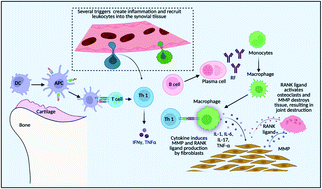
Nanoscale Adv., 2022,4, 3479-3494
https://doi.org/10.1039/D2NA00229A
Recent development of organic–inorganic hybrid photocatalysts for biomass conversion into hydrogen production
In this review, we mainly summarize the important progress in the development of organic–inorganic hybrid photocatalysts for the production of hydrogen using biomass and its derivatives. Recent progresses and challenges are also discussed.
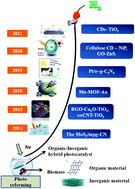
Nanoscale Adv., 2022,4, 2561-2582
https://doi.org/10.1039/D2NA00119E
A review on contemporary nanomaterial-based therapeutics for the treatment of diabetic foot ulcers (DFUs) with special reference to the Indian scenario
Nanomaterial-based therapeutic treatment shows promising results in enhancing the anti-inflammatory, antimicrobial and angiogenic potential in diabetic rodents for effective wound healing process.
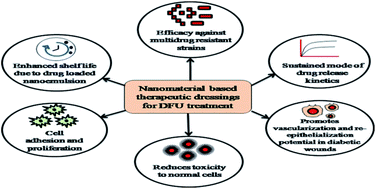
Nanoscale Adv., 2022,4, 2367-2398
https://doi.org/10.1039/D1NA00859E
ZnO nanostructured materials and their potential applications: progress, challenges and perspectives
Extensive research in nanotechnology has been conducted to investigate new behaviours and properties of ZnO materials with nanoscale dimensions.

Nanoscale Adv., 2022,4, 1868-1925
https://doi.org/10.1039/D1NA00880C
Emerging doping strategies in two-dimensional hybrid perovskite semiconductors for cutting edge optoelectronics applications
We present the progress in doping of 2D perovskites including synthesis strategies and their impact on structure and optoelectronic properties. Applications of doped 2D perovskites for photovoltaic, LED and other emerging applications are presented.

Nanoscale Adv., 2022,4, 995-1025
https://doi.org/10.1039/D1NA00709B
Improved photovoltaic performance of Pb-free AgBi2I7 based photovoltaics
Bismuth based hybrid perovskites light absorbers are good candidates for developing lead-free and air-stable photovoltaics, but they have historically been constrained by poor surface morphologies and large band-gap energies.

Nanoscale Adv., 2023,5, 1624-1630
https://doi.org/10.1039/D3NA00029J
Electrocatalytic study of the hydrogen evolution reaction on MoS2/BP and MoSSe/BP in acidic media
Molecular hydrogen (H2) production by the electrocatalytic hydrogen evolution reaction (HER) on van der Waals heterostructure.

Nanoscale Adv., 2023,5, 5332-5339
https://doi.org/10.1039/D3NA00215B
Development of fluorescent carbon nanoparticles from Madhuca longifolia flower for the sensitive and selective detection of Cr6+: a collective experimental–computational approach
Herein, blue-emitting carbon nanoparticles (CNPs) were synthesized using the Madhuca longifolia flower for the highly selective and sensitive detection of Cr6+ ions in aqueous media using a simple, green, and cost-effective approach.

Nanoscale Adv., 2023,5, 4269-4285
https://doi.org/10.1039/D3NA00289F
Development of hierarchical copper sulfide–carbon nanotube (CuS–CNT) composites and utilization of their superior carrier mobility in efficient charge transport towards photodegradation of Rhodamine B under visible light
Synthesis of copper sulfide nanoparticle carbon nanotube composites (T-CuS) via a solvothermal technique and measurement of its current–voltage characteristics and photocatalytic degradation of RhB in the presence of the T-CuS under visible light.

Nanoscale Adv., 2023,5, 3655-3663
https://doi.org/10.1039/D3NA00204G
Spatiotemporal dynamics of DNA nanocage uptake in zebrafish embryos for targeted tissue bioimaging applications
Three-dimensional DNA nanocages have attracted significant attention for various biomedical applications including targeted bioimaging in vivo.

Nanoscale Adv., 2023,5, 2558-2564
https://doi.org/10.1039/D2NA00905F
Single-phase BiFeO3 and BiFeO3–Fe2O3 nanocomposite photocatalysts for photodegradation of organic dye pollutants
Synthesis of BFO–Fe2O3 composites using hollow spherical Fe2O3. The improved photocatalytic performance, stability and magnetic recovery of pure phase BFO after the addition of hollow spherical Fe2O3.

Nanoscale Adv., 2023,5, 2646-2656
https://doi.org/10.1039/D2NA00881E
Bright and ultrafast electron point source made of LaB6 nanotip
For the first time, we investigate strong-field photoelectron emission from LaB6 needles, opening the way towards new sources of ultra-short pulses of electrons.

Nanoscale Adv., 2023,5, 2462-2469
https://doi.org/10.1039/D3NA00069A
Withania somnifera-derived carbon dots protect human epidermal cells against UVB-induced cell death and support growth factor-mediated wound healing
Solar radiation comprising UVA and UVB regions is considered a skin-damaging factor inducing inflammation, oxidative stress, hyperpigmentation, and photo-aging.

Nanoscale Adv., 2023,5, 1331-1344
https://doi.org/10.1039/D2NA00545J
Capturing charge and size effects of ions at the graphene–electrolyte interface using polarizable force field simulations
Different modes of interactions for K+ ions observed from additive and Drude polarizable force field simulations.

Nanoscale Adv., 2023,5, 796-804
https://doi.org/10.1039/D2NA00733A
Electrochemical analysis of glyphosate using porous biochar surface corrosive nZVI nanoparticles
Synthetically benign and facile, highly sensitive nZVI@Biochar sensor derived from lotus stem for sensing of glyphosate in aqueous solution.

Nanoscale Adv., 2023,5, 742-755
https://doi.org/10.1039/D2NA00610C
Surface functionalized silver-doped ZnO nanocatalyst: a sustainable cooperative catalytic, photocatalytic and antibacterial platform for waste treatment
The different dyes used and discharged in industrial settings and microbial pathogenic issues have raised serious concerns about the content of bodies of water and the impact that dyes and microbes have on the environment and human health.

Nanoscale Adv., 2023,5, 805-819
https://doi.org/10.1039/D2NA00864E
Antiferromagnetic skyrmion-based high speed diode
An AFM skyrmion based diode is designed using a staircase notch region at the middle of the nanotrack. The notch region induces the change in potential energy and acts as a barrier, thus allowing the unidirectional motion of the skyrmion.

Nanoscale Adv., 2023,5, 450-458
https://doi.org/10.1039/D2NA00748G
Cobalt-doped copper vanadate: a dual active electrocatalyst propelling efficient H2 evolution and glycerol oxidation in alkaline water
Co doping resulted in an enhancement of the electrocatalytic properties of copper vanadate towards the HER and the GOR to form formic acid.
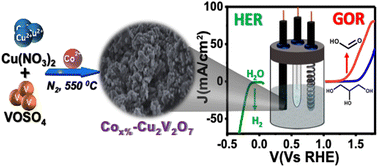
Nanoscale Adv., 2023,5, 237-246
https://doi.org/10.1039/D2NA00724J
Immuno-chromatic probe based lateral flow assay for point-of-care detection of Japanese encephalitis virus NS1 protein biomarker in clinical samples using a smartphone-based approach
Lateral flow assay for rapid detection of the JEV NS1 protein biomarker (NS1) in serum samples incorporating a smartphone-based colorimeter application.

Nanoscale Adv., 2022,4, 3966-3977
https://doi.org/10.1039/D2NA00463A
Biomass-derived cellulose nanofibers and iron oxide-based nanohybrids for thermal insulation application
This study reports the development of a nanohybrid aerogel from biomass-derived cellulose nanofibers and iron oxide, with high mechanical strength, fire retardant properties and low thermal conductivity as low as 0.024 W m−1 K−1.

Nanoscale Adv., 2022,4, 3381-3390
https://doi.org/10.1039/D2NA00010E
Facile synthesized zinc oxide nanorod film humidity sensor based on variation in optical transmissivity
Variation in the transmitted light intensity from zinc oxide thin films with moisture content provides a great opportunity to use them for humidity sensing.
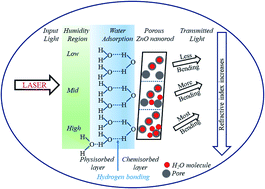
Nanoscale Adv., 2022,4, 2902-2912
https://doi.org/10.1039/D1NA00893E
Morin encapsulated chitosan nanoparticles (MCNPs) ameliorate arsenic induced liver damage through improvement of the antioxidant system and prevention of apoptosis and inflammation in mice
Chronic exposure to arsenic over a period of time induces toxicity, primarily in the liver but gradually in all systems of the body.

Nanoscale Adv., 2022,4, 2857-2872
https://doi.org/10.1039/D2NA00167E
Rare earth metal (Sm)-doped NiMnO3 nanostructures for highly competent alkaline oxygen evolution reaction
In the present work, samarium-doped nickel manganese oxide was produced by employing a straightforward co-precipitation method.

Nanoscale Adv., 2022,4, 2501-2508
https://doi.org/10.1039/D2NA00022A
A conjugated 2D covalent organic framework as a drug delivery vehicle towards triple negative breast cancer malignancy
A novel biocompatible COF, TRIPTA is used as a drug delivery carrier for cisplatin in TNBC cells. It delivered cisplatin effectively, which inhibited the proliferation and migration of TNBC cells by increasing the cytotoxicity of cisplatin.

Nanoscale Adv., 2022,4, 2313-2320
https://doi.org/10.1039/D2NA00103A
Self-assembled dipeptide based fluorescent nanoparticles as a platform for developing cellular imaging probes and targeted drug delivery chaperones
Newly synthesized PS1-Zn(II) and PS2-Zn(II) representing short peptide-based fluorescent nanostructures, shows great promise for the development of new imaging probes and targeted drug delivery vehicles.

Nanoscale Adv., 2022,4, 1694-1706
https://doi.org/10.1039/D1NA00885D
Water stable, red emitting, carbon nanoparticles stimulate 3D cell invasion via clathrin-mediated endocytic uptake
Bright fluorescent nanoparticles with excitation and emission towards the red end of the spectrum are highly desirable in the field of bioimaging.

Nanoscale Adv., 2022,4, 1375-1386
https://doi.org/10.1039/D1NA00813G
About this collection
To showcase some of the great research happening in India, this collection collates some of the most popular advances in nanoscience published in Nanoscale Advances in the last couple of years. Papers have been selected based on the number of citations, article downloads, and Altmetric scores.